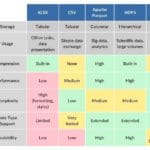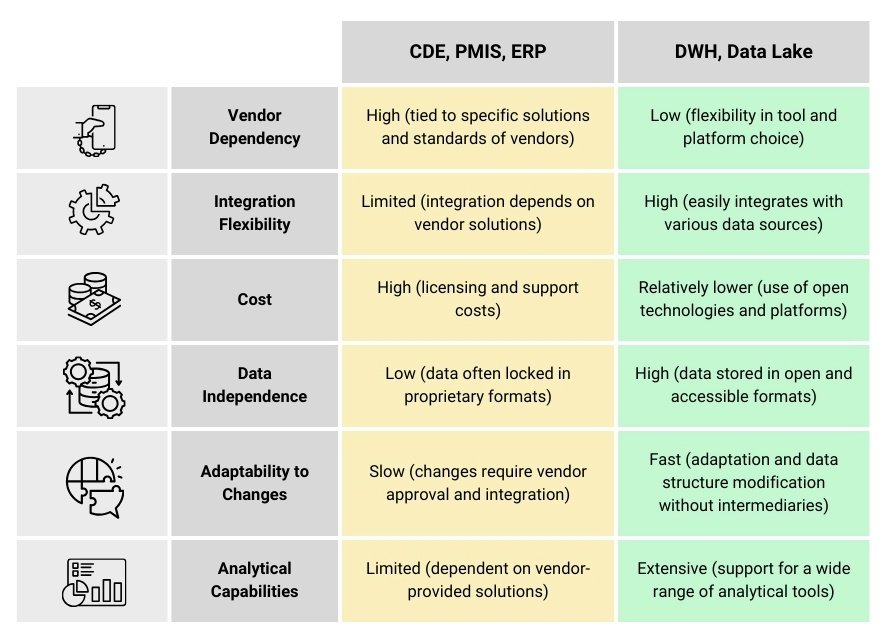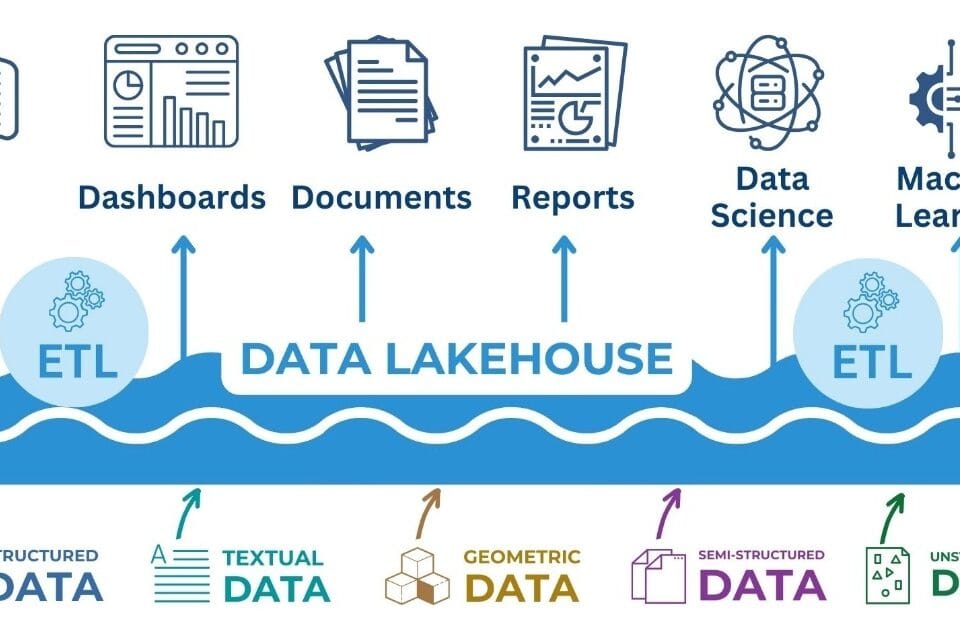Data warehouses allow companies to collect and combine information from different systems, creating a single center for subsequent analytics. Collected historical data enables not only deeper analysis of processes, but also the identification of patterns that can affect business performance.
Let’s say a company is working on several projects at the same time. An engineer wants to understand how much concrete has been poured and how much is still to be purchased. In a traditional approach, he would have to manually search the server and open several estimate tables, compare them with the certificates of completed work and check the current stock balances. This takes hours, if not days. Even with ETL processes and automatic scripts, the task remains semi-manual: the engineer still has to manually specify the path to folders or specific files on the server. This reduces the overall effect of automation, as it continues to take up valuable work time.
When switching to data management, instead of working with the server file system, the engineer gets access to a unified storage structure where information is updated in real time. A single query – in the form of a code, SQL -query or even a call to an LLM -agent – can instantly provide accurate data on current balances, volumes of work performed and upcoming deliveries, if the data has been prepared in advance and combined in a data warehouse where there is no need to wander through folders, open dozens of files and manually compare values.
For a long time construction companies used PDF -documents, DWG -drawings, RVT -models and hundreds and thousands of Excel -tables and other disparate formats, which are stored in certain folders on the company’s servers, making it difficult to find information, check and analyze it. As a result, the files left after projects are completed are most often moved back to the server into archival storage folders, which are practically not used in the future. Such traditional file-based data storage loses relevance with increasing data flow due to its vulnerability to human error.
A file is just an isolated container in which data is stored. Files are created for people, not systems, so they require manual opening, reading and interpretation. An example would be an Excel -table, a PDF -document, or a CAD -drawing that needs to be specifically opened in a certain tool to access the desired information. Without structured retrieval and processing, the information in it remains unused.
Data, in turn, is machine-readable information that is linked, updated, and analyzed automatically. In a single data warehouse (e.g., database, DWH or Data Lake), information is represented as tables, records, and relationships. This enables uniform storage, automated queries, value analysis, and real-time reporting.
Using data instead of files (Fig. 8.1-1) makes it possible to eliminate the manual search process and unify processing. Companies that have already implemented such an approach gain a competitive advantage due to the speed of access to information and the ability to quickly integrate it into business processes.
The shift from file-based to data-driven is an inevitable change that will shape the future of the construction industry.
Every company in the construction industry will face a key choice: continue to store information in disparate files and silos that must be read by humans using special programs or transform it in the first stages of processing into structured data, creating a single integrated digital foundation for automated project management.

With the explosion of information, traditional methods of storing and processing files are becoming less and less efficient. In the construction industry, as in other sectors, it is no longer sufficient to rely on disparate file folders with different file formats or unconnected databases.
Companies seeking to remain competitive in the digital age will inevitably shift to integrated digital platforms, utilize big data technologies and automated analytics systems.
Moving from file storage to data will require a rethinking of information management approaches and a conscious choice of formats suitable for further integration into centralized repositories. This choice will determine how efficiently data can be processed, how quickly it can be accessed, and how easily it can be integrated into a company’s digital processes.






















